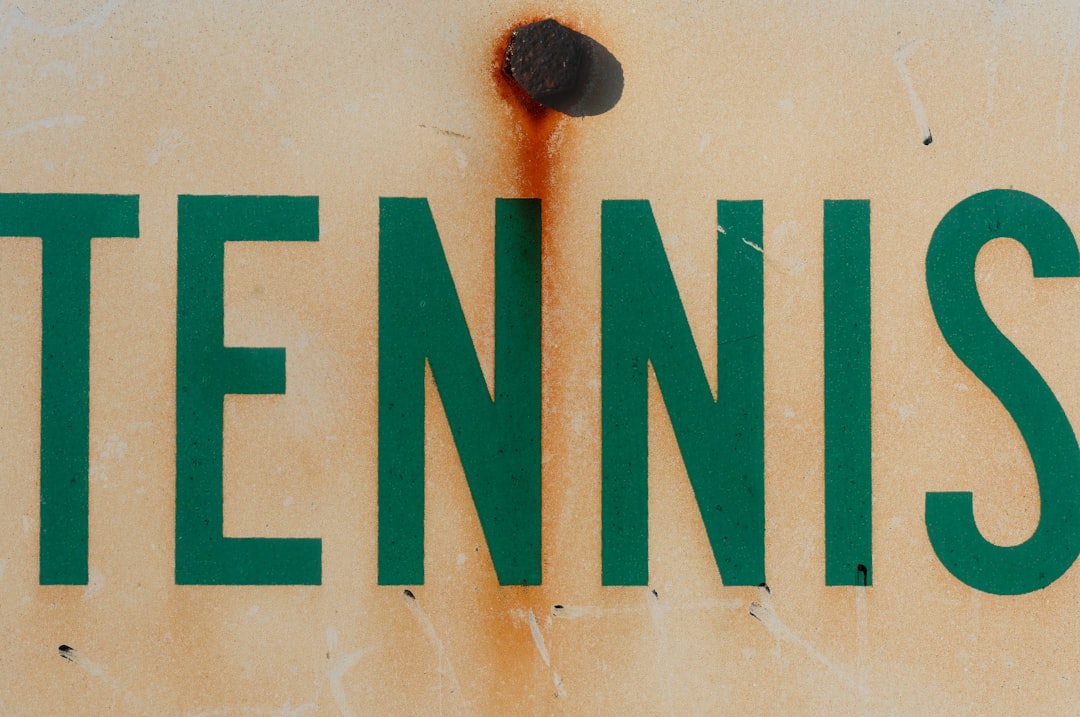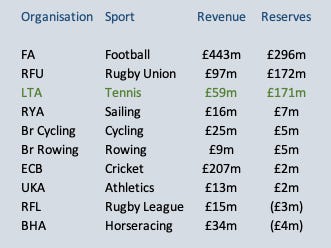If you want to know what’s wrong with tennis in Britain, look no further than Wimbledon. Blame The Championships for being such a phenomenal success that they bequeath the Lawn Tennis Association more money each year than it can handle effectively, while simultaneously raising the public’s hunger for the LTA to deliver more grand slam winning Murrays and Raducanus. Less might lead to more.
Wimbledon is the LTA’s sugar daddy. The Championships are organised by the All England Lawn Tennis & Croquet Club in an arrangement extending out to 2053. Seven of the nineteen members of the committee stewarding the grand slam are from the LTA, which in turn receives 90 percent of the profits from the event to spend on the wider development of the game.
Last year, as pandemic constraints eased, revenues from the Wimbledon fortnight were £288m, turning out a £43m profit. The resulting £39m payment to the LTA made up 67% of the governing body’s overall £59m revenues. A further 10% came in payments for services provided to The Championships.
While LTA members sit on Wimbledon’s committee of management, the reverse is not true. And yet the All England needs a flow of British stars to add that extra layer of lacquer to its glossy event. Nothing like a home winner, or even simply a plucky Brit who makes it into the second week of the tournament.
It may seem strange to argue that there is such a thing as too much money for a governing body, but history suggests that can be the case. Trivial yes, but one thinks of British Cycling and the suggestion that a senior member of its staff’s teeth were sorted out on the corporate dime - effectively from ‘excess’ lottery funding. This at the height of the scandals that swirled around an organisation that had become ethically ungrounded.
The LTA is headquartered three miles down the road from Wimbledon’s Centre Court, in a lavishly appointed complex that had cost £40m by the time it opened in 2007. Part high performance centre, part office block, the HQ has a courtyard centrepiece built around a centuries old, protected plane tree. Not so much money-no-object as no-financial-excuses.
Down the years, LTA chief executives have been pilloried for drawing salaries considered excessive by the governing body’s critics. Those CEOs and their overseeing boards have flip-flopped on the purpose of the tennis facilities at HQ, a high-profile vacillation emblematic of a broader flip-flopping over the LTA’s strategy to grow the game - and deliver elite success.
Even when British players do succeed, as the men did in winning the Davis Cup for the first time in 79 years in 2015, there are many quick to ensure the LTA takes little credit. However deep their complaints or concerns ran, I thought the speed with which those victorious players distanced themselves from the LTA was pretty graceless.
“I feel like you waste time because nothing ever gets done, and I don’t feel like wasting my time. I don’t speak to any of the people in a high-up position about that. I haven’t really spoken to them about anything.” Andy Murray after winning the David Cup
Sport England’s survey of the nation’s sporting habits shows that participation in tennis has shrunk by 28 percent over the past five years. This against a backdrop of overall national activity levels that have been roughly flat. It’s always possible to quibble about Sport England data, but this is an alarming underperformance from tennis, however you look at it.
At the other end of the spectrum, there are currently a total of just four Brits in the top 100 men’s and women’s world rankings. Not that the LTA’s chair is at all downbeat in its latest annual report.
“With the on-court success of our British players together with the progress we are making in the delivery of our long-term strategic plans, there has perhaps never been a more exciting time for tennis in Britain.” Lord Davies of Abersoch
The LTA was sitting on £171m of reserves at the end of 2021. It’s also sitting on the profits and publicity from arguably the greatest tennis tournament in the world. But each year, fewer pick up a racquet in its immediate afterglow. Perhaps tennis’ governing should instead imagine it has skinny resources and build a strategy accordingly, focusing laser-like on only those critical actions that might truly make a difference. Answers on the back of an Order of Play.
Race to a halt
Tennis isn’t the only sport with participation problems. The evidence of my eyes is that grassroots running events have bounced back strongly from the pandemic. But they have been deceiving me, as the numbers say otherwise.
In the past few weeks, one race organiser with a roster of small but excellent events in the south has gone into administration. Another has decided to call it a day after eight years. Its final race had runner numbers a massive 75% down on pre-pandemic levels, with operating costs higher too in these inflationary times.
And money isn’t the only issue. One well-established, free ParkRun in south west London had 20% fewer runners on average each week in May this year compared to pre-covid 2019. An early warning of the effect of the pandemic for Sport England’s next Active Lives survey?
Baa-Baa backsides
Aside from George Kruis’ back-heeled conversion to complete the 14-man Barbarians’ battering of England on Sunday, the most striking images for me were the logos plastered across the Baa-Baa backsides. No doubt I was one of many TV viewers to google ‘Walter Cooper’ during a lull in the game. Whatever the Barbarians’ new ‘land consultancy partner’ from Widford, Hertfordshire paid, I hope the small outfit got the right type of eyeballs for its money. Fun start to their partnership that’s for sure.
In case you missed Kruis’ farewell to rugby, watch it here: Back-heel







Great to get feedback Tom - thanks very much! Looking forward to seeing a big jump in the data then when SE next publish - and Brits climbing the world rankings too of course. Enjoy Wimbledon!
What does Ed Warner know about tennis? The above is full of inaccuracies and falsehoods.
Jack Draper, Top 100 Men's player said 2 days ago:
“The LTA have done an amazing job of cultivating something better in British tennis. A more performance based approach. And the National Tennis Centre is an incredible venue and the players love training there and the environment for the players is so much better. I know people are quick to slag them off but I will be the first to say they really changed the way British tennis is.”
At the recreational level, the numbers of people playing tennis post pandemic has been recovering
steadily and in fact monthly participation figures are at the highest levels the LTA have ever recorded.